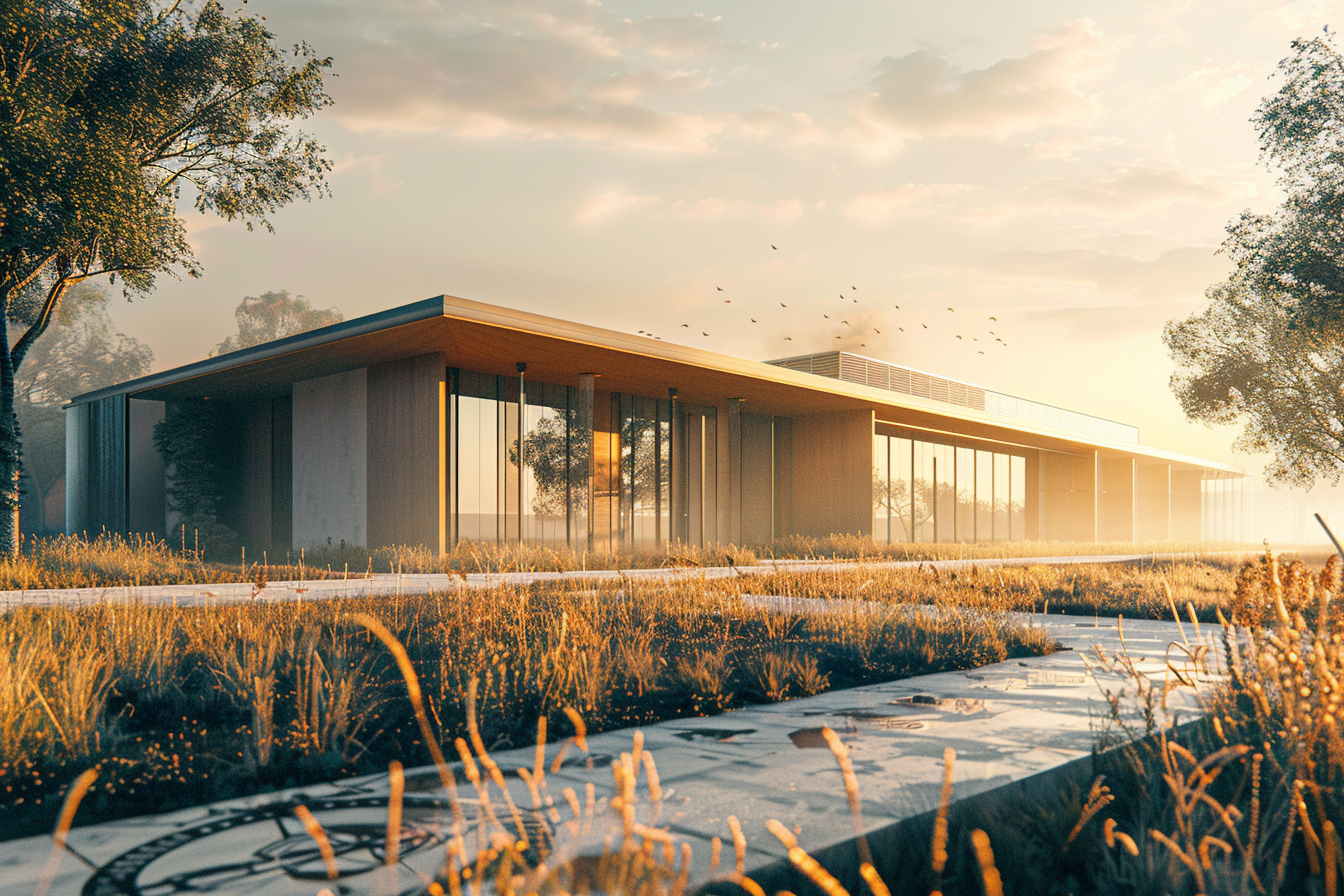Climate Analysis for Passive Design

1. Introduction
Climate analysis is a foundational step in designing energy-efficient, comfortable, and responsive buildings. By understanding the environmental forces of a site, architects can shape spaces that work with the climate instead of against it. Passive design strategies—those that use natural energy flows rather than mechanical systems—depend on precise climate knowledge. For recent architecture graduates stepping into professional practice, mastering climate analysis transforms theoretical sustainability into real-world performance. This article explains how to conduct climate analysis and apply its results through passive design techniques tailored to site-specific conditions.
2. What is Climate Analysis? Climate analysis is the systematic study of a site's environmental conditions to inform architectural decisions. It involves interpreting data like temperature, humidity, solar radiation, wind, rainfall, and seasonal patterns to optimize building performance.
Key Parameters in Climate Analysis:
- Dry Bulb Temperature: Standard air temperature.
- Relative Humidity: Moisture in the air relative to the maximum possible at the same temperature.
- Solar Radiation: Intensity and direction of sunlight.
- Wind Speed and Direction: Influences natural ventilation.
- Precipitation: Affects water management and materials.
- Diurnal Temperature Range: Difference between day and night temperatures, crucial for thermal mass strategies.
Pro Tip: Use at least 10 years of weather data for more accurate analysis—many tools use TMY (Typical Meteorological Year) files.
3. Tools and Methods for Climate Analysis
Common Software Tools:
- Climate Consultant (UCLA): Translates TMY data into graphic representations.
- Ladybug Tools (for Rhino/Grasshopper): Parametric climate visualization and analysis.
- Autodesk Insight: Integrates analysis into Revit workflows.
- Meteonorm & EnergyPlus Weather Files: Provide global datasets.
Methods:
- Psychrometric Chart Analysis: Plots comfort zones and identifies passive strategies.
- Sun Path Diagram: Shows sun movement across seasons to optimize orientation and shading.
- Wind Rose Diagram: Visualizes prevailing wind directions and frequencies.
Pro Tip:Overlay wind data on site plans to identify ideal openings and courtyard positions.
4. Understanding Climate Zones Different climates demand different passive strategies. The Köppen-Geiger classification offers a high-level breakdown:
- Hot-Humid (e.g., Singapore): Focus on shading, cross ventilation, and moisture control.
- Hot-Arid (e.g., Dubai): Maximize thermal mass and night cooling.
- Temperate (e.g., Barcelona): Use flexible, season-responsive strategies.
- Cold (e.g., Moscow): Prioritize insulation, solar gain, and airtightness.
Pro Tip:When in doubt, start with the climate zone and adjust based on microclimatic factors like altitude, urban density, or vegetation.
5. Site-Specific Factors That Modify Climate
Even within the same climate zone, local conditions can vary dramatically due to:
- Topography: Hills, slopes, and valleys affect wind, shade, and radiation.
- Urban Heat Island Effect: Urban areas can be 1°C to 7°C warmer than rural counterparts.
- Vegetation: Trees can reduce ambient temperatures and filter air.
- Water Bodies: Lakes and rivers can regulate microclimates.
Pro Tip: Use on-site measurements (e.g., with handheld weather sensors) to validate data from climate files.
6. Applying Climate Data to Passive Design Strategies
6.1 Orientation
Position buildings to optimize solar gain in winter and minimize it in summer.
- North-South orientation works best in most temperate and hot climates.
6.2 Natural Ventilation
- Align openings with prevailing winds.
- Use stack effect and cross ventilation principles.
6.3 Thermal Mass
- Store daytime heat in walls/floors for release at night (effective in arid and temperate zones).
6.4 Insulation and Airtightness
- Crucial in cold climates to prevent heat loss.
6.5 Shading Devices
- Overhangs, louvers, and vegetation to control solar gain.
Pro Tip: Design operable shading elements to adapt to seasonal changes, especially in mixed climates.
7. Case Studies7.1 Bullitt Center, Seattle, USA
- Climate: Temperate maritime
- Strategies: South-facing orientation, deep roof overhangs, operable windows, thermal mass floors
- Outcome: Net-positive energy building; over 60% reduction in HVAC loads
7.2 Pearl Academy, Jaipur, India
- Climate: Hot and semi-arid
- Strategies: North-facing courtyards, passive cooling wind tunnels, thermal mass with exposed concrete
- Outcome: Achieves comfortable internal conditions with minimal mechanical intervention
7.3 Khoo Teck Puat Hospital, Singapore
- Climate: Hot-humid
- Strategies: Cross-ventilation, vertical landscaping, shaded courtyards, evaporative cooling through water features
- Outcome: 50% less energy use compared to similar-sized hospitals in the region
Pro Tip: Study climate-driven projects in similar latitudes or elevations for the most relevant precedents.
8. Conclusion Climate analysis is not just a sustainability buzzword—it's a tool for creating smarter, more responsive buildings. By understanding site-specific opportunities, architects can reduce energy use, enhance comfort, and design in harmony with nature. For recent graduates, integrating climate analysis into your design process unlocks powerful passive solutions from the beginning of your career. Whether you're designing a desert pavilion or a tropical clinic, the climate is your greatest constraint—and your best ally.